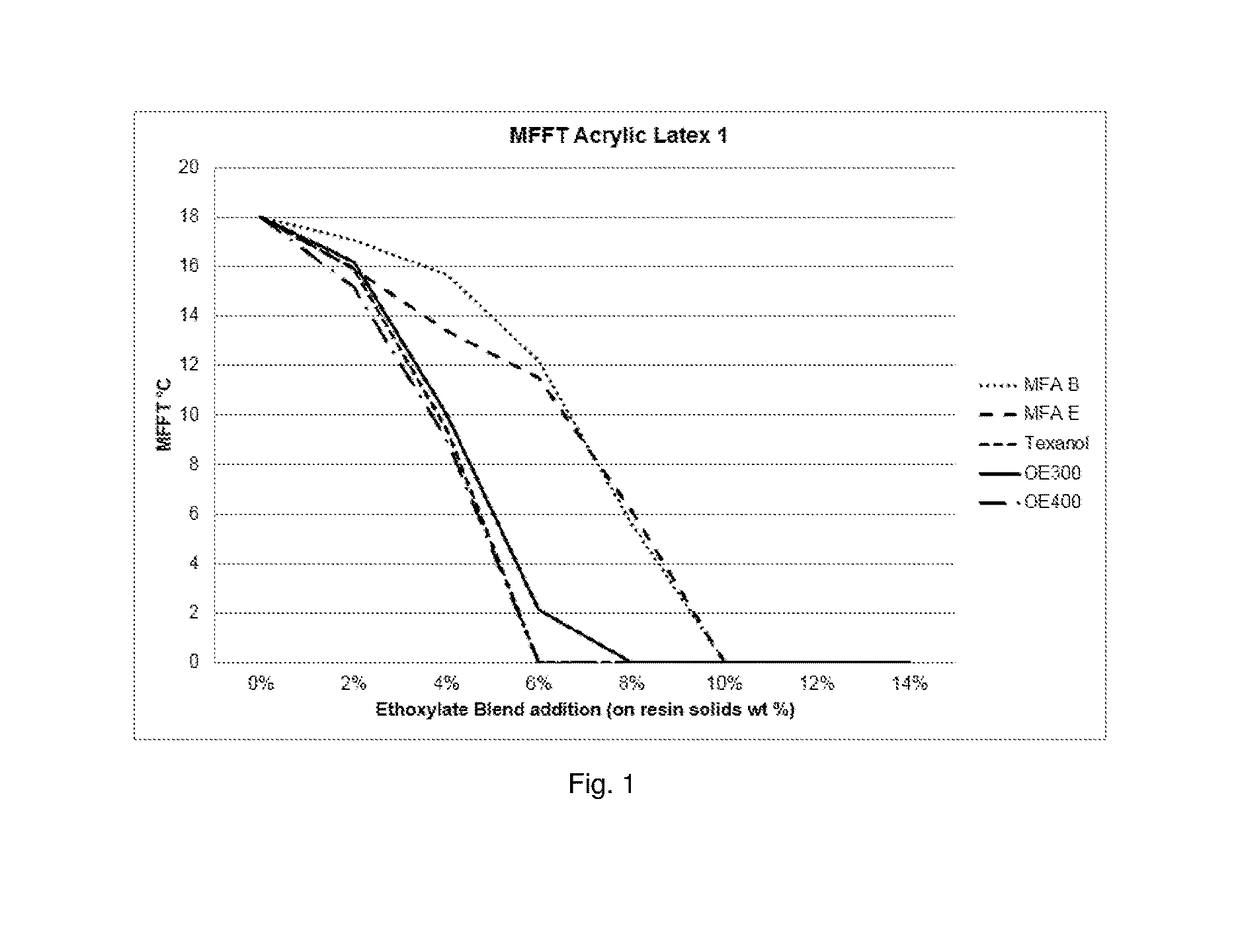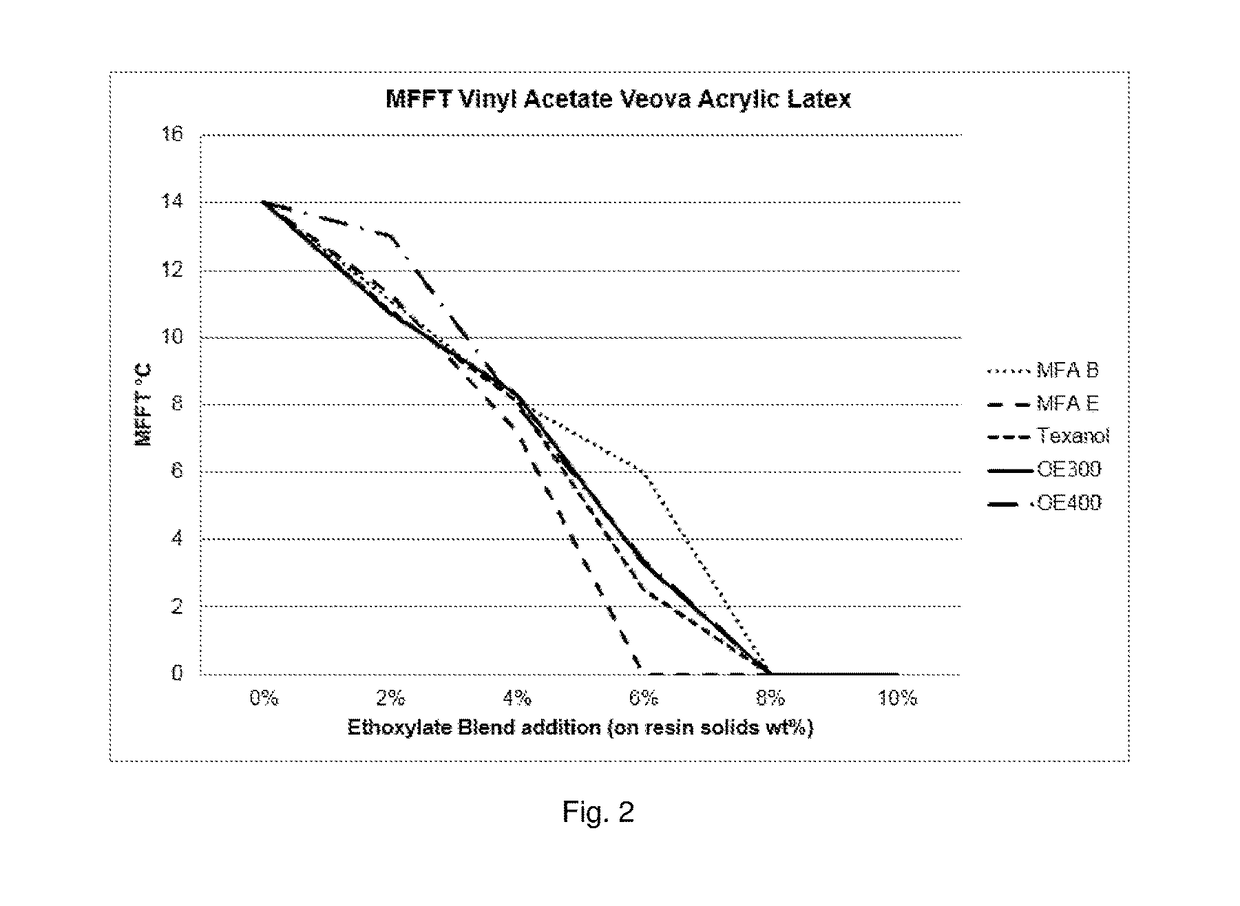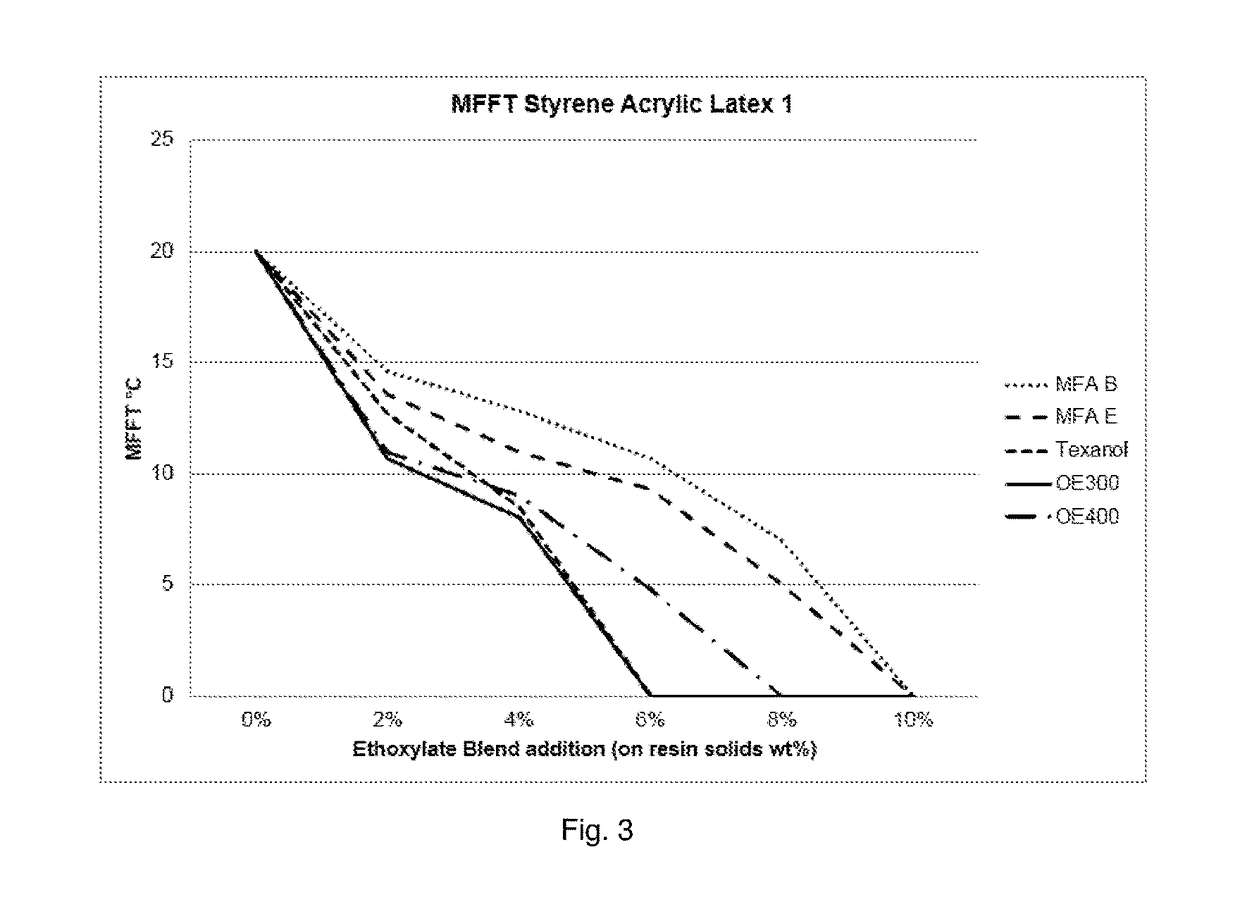Coalescent and non-ionic surfactant blend
a technology of surfactant and blend, which is applied in the direction of unspecified rubber coatings, organic chemistry, coatings, etc., can solve the problems of increasing the complexity and difficulty of adjusting paint formulations, not providing adequate performance in common formulations to allow total replacement of two
- Summary
- Abstract
- Description
- Claims
- Application Information
AI Technical Summary
Benefits of technology
Problems solved by technology
Method used
Image
Examples
example 1
[0049]150 g (700 mmol) of 2,2,4-trimethyl-1,3-pentanediol monoisobutyrate (TXOL) containing, 0.25% Na by weight, was placed in a 300 mL stainless steel autoclave. The autoclave was sealed and purged with nitrogen. 20 mL (17.5 g, 400 mmol) of ethylene oxide (EO) was condensed from a sample bomb and pressured into the autoclave with nitrogen. The molar ratio of TXOL to EO was 1.2 mmol of TXOL per mmol of EO. The autoclave was placed into a computer controlled heating and stirring apparatus. The reactor was brought to 125° C. and charged with nitrogen to a pressure of 861.8 kPa. The mixture was stirred at 700 rpm. The apparatus was held at pressure and temperature for 2 hours. The apparatus was cooled in an ice bath to below 10° C., vented, and the contents sampled.
[0050]Reactor effluent was subjected to vacuum distillation to produce material for testing. The effluent was charged to a 500 mL round bottom flask with a Vigreux fractionating column, chilled condenser, and fraction collec...
example 2
[0051]Example 2 was carried out similarly to Example 1, except with 0.9 mmol of TXOL per mmol of EO.
examples 3 & 4
[0052]Examples carried out in a manner similar to Example 1 with indicated ratio of reactants (Table 1). The 2,2,4-trimethyl-1,3-pentanediol monoisobutyrate used in these examples contained 0.4% Na by weight.
[0053]
TABLE 1TXOL:EOEx-EO (mol:Con-amplemol)version%EO1a%EO2a%EO3a%EO4a%EO5a11.8 88%77.722.200020.87 70%47.333.113.46.2032 91%37.629.319.74.29.141.3100%29.930.718.511.69.2amole % of ethoxylates containing 1, 2, 3, 4, or 5 moles of EO.
PUM
| Property | Measurement | Unit |
|---|---|---|
| Temperature | aaaaa | aaaaa |
| Percent by mass | aaaaa | aaaaa |
| Percent by mass | aaaaa | aaaaa |
Abstract
Description
Claims
Application Information
 Login to View More
Login to View More - R&D
- Intellectual Property
- Life Sciences
- Materials
- Tech Scout
- Unparalleled Data Quality
- Higher Quality Content
- 60% Fewer Hallucinations
Browse by: Latest US Patents, China's latest patents, Technical Efficacy Thesaurus, Application Domain, Technology Topic, Popular Technical Reports.
© 2025 PatSnap. All rights reserved.Legal|Privacy policy|Modern Slavery Act Transparency Statement|Sitemap|About US| Contact US: help@patsnap.com



